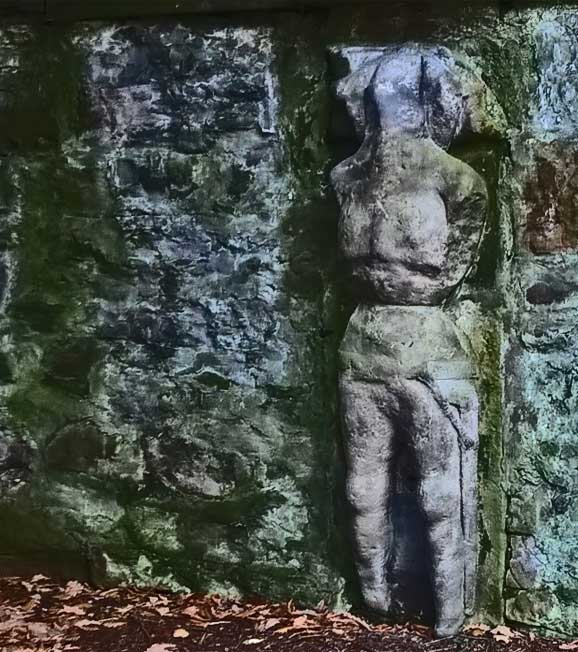Nothing illustrates the ability of our environment to fire our imagination like Halloween. Our heightened sense of awareness makes us alert to the marks and symbols left behind by others. The older the building, the more infused with symbolic power it becomes. Here are 6 spooky highlights to look out for on the NC500.
1. Greyfriars Cemetery, Inverness
The spooky spectre of a black knight is carved in stone in the graveyard on Friars Street. This graveyard is all that remains of a 13th Century priory. It was a centre for learning and governance for 300 years before it was destroyed by Oliver Cromwell in the 16th Century. There have been numerous sightings of a ghost clad in black wandering the graveyard.

2, Tomnahurich Cemetery, Inverness
You can’t miss the dramatic hill of Tomnahurich to the South of the city. The enchanted hill is known as the home fairies. On the top of the hill there is a natural amphitheatre, where they hold there ceilidh's but be on your guard. Two unwitting youths lured by the enchanted music into the hill through a secret passage, joined the ceilidh for a night of revelry and fun, but though it seemed to them that only a night had passed, in the human world, a hundred years had passed. Returning to the human world, their bodies crumbled as they aged in an instant.

3. Fairburn Tower, Muir of Ord
The Brahan Seer lived in the 16th Century and is known for having the second sight, able to see the future. He was burnt in a spiked tar barrel, on the command of the Earl's wife, Lady Seaforth.
According to his prophecy, the day would come when the MacKenzies of Fairburn would lose their entire possessions; their castle would become uninhabited and a cow would give birth to a calf in the uppermost chamber of the tower. The prophecy heralded the demise of the MacKenzies of Kintail and Seaforth.
In 1851, the now-ruined tower was being used by a farmer to store hay, and a cow gave birth in the garret. It is believed that the animal, following a trail of hay, entered the tower, climbed to the top, and got stuck. Both the cow and the calf were taken down five days later, allowing enough time for people to come and see the prophecy fulfilled.
This was one of four prophecies by the Seer regarding Fairburn, at least three of which are reputed to have been fulfilled.

4. The Split Stone, Drumholliston, Reay
The split stone sites at the side of the road a mile from Melvich at Drumholliston. It marks the ancient boundary between Caithness and Sutherland.
One dark evening, a woman returning across the moor from Reay realised she was being followed and started to run for Melvich, she stopped at the stone, which was still whole, and turned to see that she was being pursued by the Devil. Around the stone she ran, trying to evade capture, so terrified was she that the devil could not catch here. In frustration, he raised his staff and split the stone asunder with a bolt of lightning. By the time the smoke had cleared, the woman was already too far away to catch.

5. Castle Varrich, Tongue
Sitting on a promontory overlooking the village, is the ruin of Castle Varrich, Seat of the Clan Mackay.
To build the ancient castle, the chief sent for the assistance of worker faeries, from a local witch. In no time at all, the had built him a fine stone castle. But that wasn’t enough, they could not be stopped, constantly tormenting the chief like midges for more work. Finally in exasperation, he commanded them to make a chain of sand across the Kyle of Tongue and not to return until it was done. Every day the faeries toil at their task and every day the incoming tide destroyed it, leaving them to start over again.

MAAC studio are accredited conservation architects working with traditional buildings throughout the North of Scotland.


